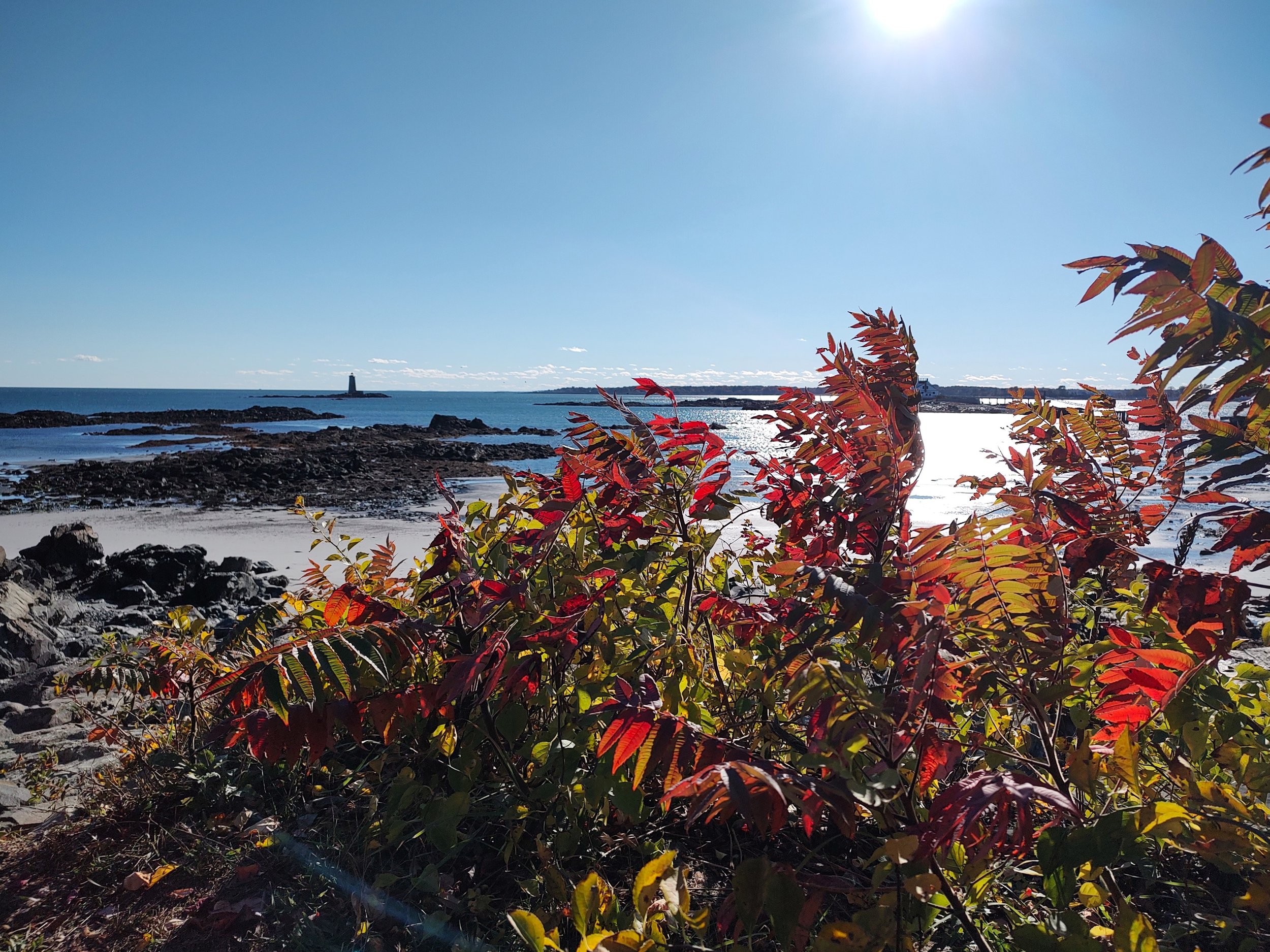Fort Foster
Whaleback Lighthouse
For late October, the temperature was quite warm on Maine’s southernmost coastline. I stepped out of my car and onto the soil of the 90 acre property of Fort Foster. With construction beginning in 1897, the fort was later named after New Hampshire war hero Major General John G. Foster. Foster had served in both the Mexican American War and the Civil War. During the latter, he developed a reputation for experimenting with submersibles in the Piscataqua River, which the Fort sits adjacent to. Submersibles played a key role in the fort’s active history, specifically when World War II occurred and the fort’s primary purpose was to defend the coastline, protect the harbor’s intricate minefield from sabotage, and guard the Portsmouth Naval Shipyard where submarines were built.
The wind began to pick up on my visit, cutting across my bare face and tangling my hair. I retreated to the shelter of the fort’s battery. The Battery Chapin was named after Brigadier General Edward Chapin, who was killed in action in 1863 far away from the fort. An earthen berm once surrounded the battery was removed in the 1950s, and soon after the Coincidence Range Finder (CRF) that sat in the battery’s roof structure was removed as well. The CRF allowed the 100+ people stationed at the fort to accurately calibrate the distance to any visible targets on the horizon.
In 1961, the fort grounds were turned over to the public, and the battery’s roof structure now serves as a lovely vantage point for the surrounding lighthouses and the Portsmouth Naval Prison. The first visible lighthouse is the Whaleback Lighthouse, built 75 feet tall in 1872, According to nearby signs, the light can be seen as far as 17 nautical miles away. The second lighthouse goes by many names—Portsmouth Harbor Light, Fort Point Light, New Castle Light, and Fort Constitution Light. It’s located within the U.S. Coast Guard Station in New Castle, New Hampshire. The lighthouse was built in 1877, replacing a series of other lighthouses that sat in its spot since 1771. It only stands at a little over half the height of the Whaleback Lighthouse, measuring 48 feet tall.
Also visible from the fort is the Wood Island Lifesaving Station, which was built in 1908 for the U.S. Lifesaving Service (the U.S. Coast Guard’s predecessor). People known as “Surfmen” would row out from the station to aid distressed mariners.
Visible in the distance is the Portsmouth Naval Prison, which is located at the Portsmouth Naval Shipyard. The prison developed the moniker “The Castle” when it was built in 1908, modeled after Alcatraz. The prison housed U..S Navy and Marine Corps prisoners until 1974, when it fell out of use due to issues like lead paint and asbestos.
As the wind eased its pull, I descended the battery’s steps to walk along the long ocean trail. Sandy beaches and rocky outcroppings lined the path, creating picturesque views from every angle. With the afternoon sun blazing down on me, I took a seat on one of the cool, stone benches to watch the waves roll in.




